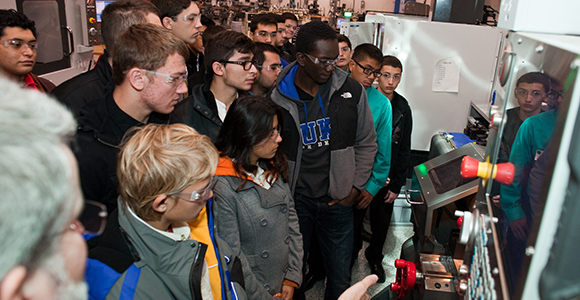
(Photo Credit: COD Newsroom/Flickr)
When the California Economic Summit annual meeting convenes in Ontario next month, it will pose a number of challenges.
One of them is how California can produce one million more bachelor degrees and one million more workers with middle-skilled credentials over the next ten years.
California will fall about 1.1 million college graduates short of economic demand by 2030, if current trends persist. The number of highly educated workers from elsewhere is unlikely to be large enough to bridge this workforce skills gap.
These are the key findings of a report released today by the Public Policy Institute of California (PPIC).
The Summit, which is the state’s largest coalition of regional and state civic leaders committed to sustainable growth, has been working on the workforce issue in California since the Summit was formed in 2012. It has attracted major state leaders to its 2015 meeting, including two of the state’s top education leaders, University of California President Janet Napolitano and California State University Chancellor Timothy White.
They will be talking about approaches that are either underway or being planned in their respective systems to address this workforce issue in the state.
In addition to the education leaders, four statewide elected officials will attend: Lt. Governor Gavin Newson, State Treasurer John Chiang, State Controller Betty Yee and Secretary of State Alex Padilla.
Another leading voice in workforce development participating in the Summit is Dr. Alma Salazar, the Vice President of Education and Workforce Development at the Los Angeles Area Chamber of Commerce.
“Workforce is a critical issue,” Salazar said. “It is imperative that in each region of California we get various institutions working together to achieve a cradle to career emphasis in developing our workforce.”
For employers big and small, the job of identifying, recruiting and retaining skilled workers is a huge challenge.
Pete Dietrich, senior vice president for transmission and distribution from Southern California Edison said he needs to hire 200 qualified electrical workers every year but can’t find them all in California.
“Right now the union hall benches are empty of qualified linemen and we have had to go outside of California to try to identify and recruit qualified workers,” he said, adding that the California’s Community Colleges have a key role to play to address this workforce shortage.
The Summit’s value in improving the pipeline of skilled workers is designed to produce results.
- Making it easier for employers to work with institutions to produce the employees they need.
- Reducing employer costs to search for and train workers
- Improving how training programs adapt to meet new demands for specific skills in a dynamic (ever changing) economy
- Creating a market-place for employer-institutional partnerships through contract education (where employers and institutions work together on training for specific job qualifications)
The Summit won’t be talking about just workforce. It has identified three major challenges vital to California’s prosperity. In addition to the one million more skilled workers, the Summit will discuss proposals to help produce one million more homes to address the state’s housing crisis and how we save one million more acre-feet of water each year.
The Summit links leaders from business, government, civic, labor and environmental organizations to solutions with a goal of generating the political will to make changes that matter.
To register for the Summit which takes place on November 12 and 13 in Ontario, click here.

